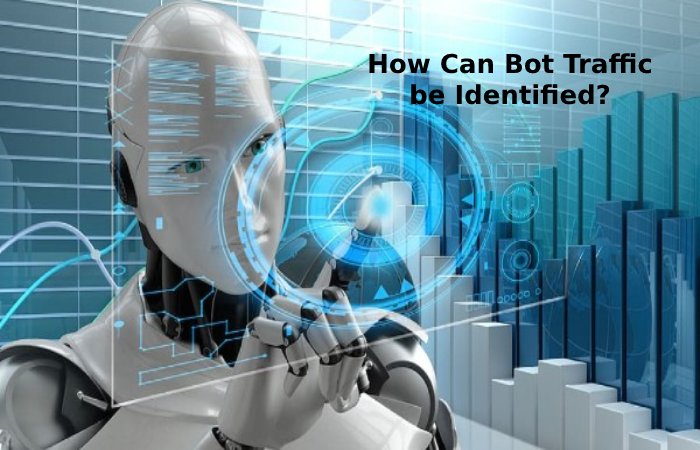Table of Contents
Introduction
Bot traffic defines any non-human traffic to a website or application. The term bot traffic often has a negative connotation, but bot traffic is not inherently good or bad; it depends on the drive of the bots.
Some bots are essential for valuable services like search engines and digital assistants (e.g., Siri, Alexa). Most companies accept these types of bots on their sites.
Other bots may have a malicious target, such as those used for credential stuffing, data scraping, and launching DDoS attacks. Even more gentle “bad” bots, like rogue web crawlers, can be annoying because they can disrupt site analytics and lead to click fraud.
How Can Bot Traffic be Identified?

Web engineers can directly view network requests to their sites and identify potential bot traffic. Built-in web analytics tools like Google Analytics or Heap can also help detect bot traffic.
The following analytic anomalies are characteristic of bot traffic:
Abnormally High Page Views
If a site sees a sharp, unprecedented, and unexpected spike in page views. Chances are bots are clicking on the site.
Abnormally High Bounce Rate
Bounce rate identifies the number of users who have reached a single page on a site and left it before clicking anywhere. An unexpected bounce rate increase can result from bots targeting a single page.
Surprisingly High or Low Session Duration
Session duration or the time users spend on a website, should remain relatively stable. An unexplained increase in session length could indicate that bots browse the site rapidly. Conversely, an unexpected drop in session duration could be cause by bots clicking through pages on the site faster than a human user would.
Unintended Conversions
A sudden spike in fake-looking conversions, such as account creations using nonsensical email addresses or contact forms submitted with false names and phone numbers, can remain the result of spam bots. Form filler or spam bots.
Spike in Traffic from an Unexpected Location
A sudden spike in users from a region, particularly an area that doesn’t have many people controlling the site’s language, can indicate it.
How can Bot Traffic Hurt Analytics?
As mentioned above, unauthorized it can affect analytics metrics like page views, bounce rate, session length, user geolocation, and conversions. These deviations in metrics can be frustrating for the site owner. It is tough to measure the Performance of a site inundated with bots. Attempts to improve the site, such as A/B testing and conversion rate optimization, are also crippled by the statistical noise generate by bots.
How to Clean Bot Traffic from Google Analytics?
Google Analytics offers an option to “exclude all results from known bots and spiders” ( spiders are search engine bots that crawl web pages). If the source of the it canister is identified, users can also provide a specific list of IPs for Google Analytics to ignore.
Although these measures may prevent some bots from interrupting the analysis, they will not stop all bots. Furthermore, most malicious bots aim for a target other than disrupting traffic analysis, and aside from preserving analytics data. These measures do nothing to mitigate harmful bot activity.
How can Bot Traffic affect Performance?
Sending huge amounts of bot traffic is a common way attackers launch a DDoS attack. During some DDoS attacks, so much attack traffic is directed at a website that the origin server is overloaded, and the site becomes slow or unavailable to legitimate users.
How can Bot Traffic Harm the Business?
Some websites can be financially affect by malicious bot traffic, even if their operation is not affect. Sites that rely on advertising and sell merchandise with limited inventory are especially vulnerable.
For ad-serving sites, bots appearing on the site and clicking various elements on the page can lead to false ad clicks, known as click fraud. While this may initially lead to increased ad revenue, online ad networks are very good at spotting bot clicks. If they suspect a website is committing click fraud, they will take action. Such as banning the website and its owner from their network. For this reason, site owners who host ads should be especially wary of bot-click fraud.
How do Websites Manage Bot Traffic?
The first step in stopping or managing it to a website is to include a robots.txt file. This file provides instructions for bots that crawl the page and can even be configured to check bots from visiting or interacting with a web page. But it should be note that only beneficial bots will comply with the rules set in robots.txt; this will not prevent malicious bots from crawling a website.
Several tools can help mitigate abusive bot traffic. A rate-limiting solution can detect and prevent bot traffic from a single IP address. But this will still miss a large amount of malicious bot traffic. In addition to rate limiting, a network engineer can look at a site’s traffic. Identify suspicious network requests, and provide a list of IP addresses that will be block by a filtering tool like WAF. It is a very labor-intensive process and still only stops a portion of the malicious bot traffic.
Conclusion
It defines any non-human traffic to a website or application. The term bot traffic often has a negative connotation, but it is not inherently good or bad. It depends on the purpose of the bots.

![All you Need to Know About Bot Traffic [2023]](https://www.webcomputertech.com/wp-content/uploads/2022/09/Bot-Traffic-1.jpg)